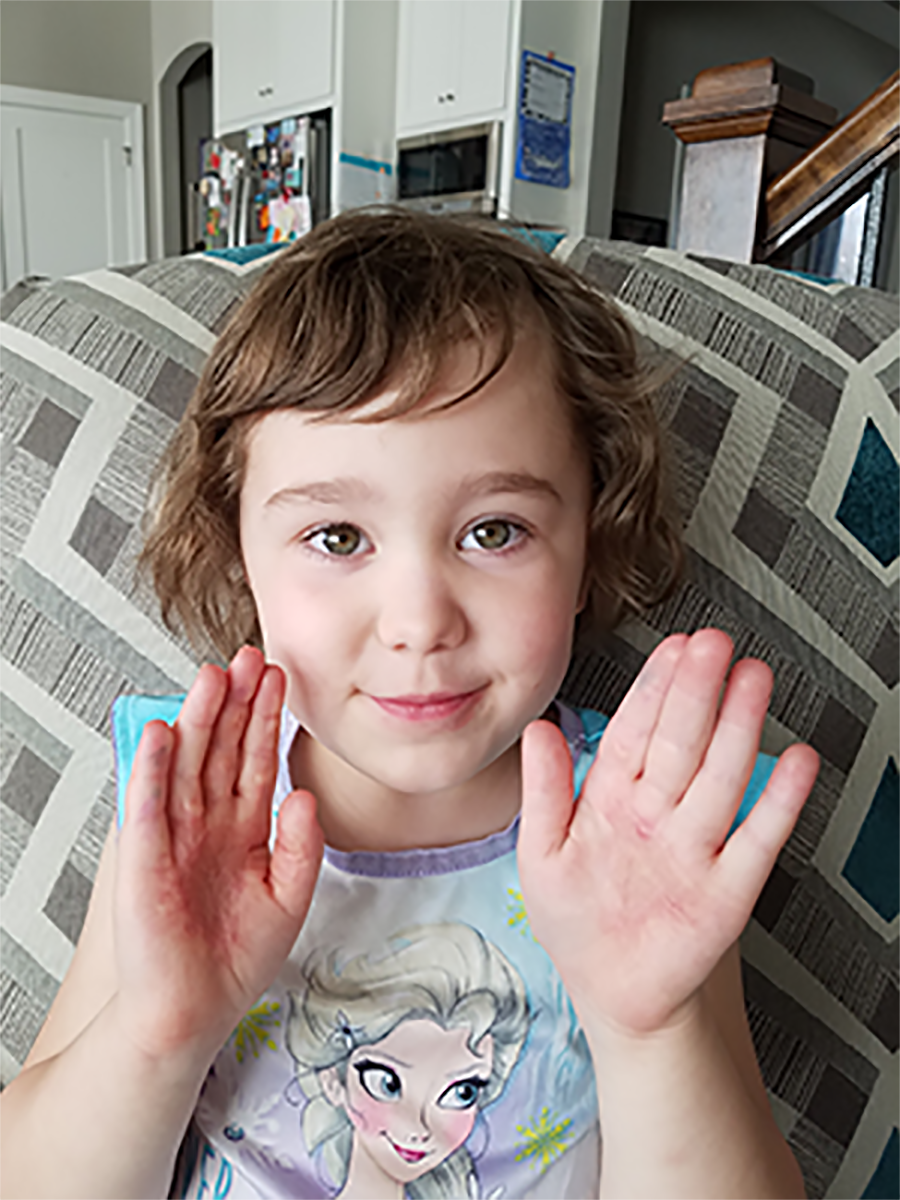One Mom Shares Personal Story and Helpful Tips to Protect Children Near Gas Fireplaces

We have been working to keep kids safe from fireplace-related burns. Check out this blog by Monica Bollinger, a mom raising awareness about how to keep kids safe around gas fireplaces by sharing the tragic story of how her 11-month-old daughter burned her hands.
We had no idea how dangerous the gas fireplace in our Minnesota home was until our daughter, Hattie, severely burned her hands in 2015. Hattie was a very active and mobile baby, and when she was 11 months old she crawled over to our fireplace, reached up to get a good look, and severely burned both hands instantly. The fireplace had only been turned on for 10 minutes and we were only feet away.
Hattie’s burns were so deep her tissue would never heal on its own, so the surgeon replaced it with artificial tissue and a skin graft from her own body. Her treatment included several surgeries and full arm and hand casts for 8 weeks, delaying her walking. Physical therapy was needed where we stretched her fingers back every 15 minutes she was awake for 6 months, then every 30 minutes for another 6 months. She wore compression gloves for a year. Hattie has had two more surgeries in 2019 and will need more surgeries in the future as she grows, since scars, artificial tissue and grafts don’t grow like regular skin. It turns out that hands are the worst place for burns.
 How Gas Fireplace Burns Happen
How Gas Fireplace Burns Happen
Hattie’s injury put me on a path to discover why this happened and what I could do to prevent this tragedy from happening to another family. Through research I discovered that gas fireplaces can be a misunderstood risk in the home, especially to young children. This is true for many reasons.
First, gas fireplaces are installed at the perfect height for little ones. Their natural curiosity for the dancing flames and reflection make it an irresistible attraction. Second, toddlers are also unstable with walking or pulling up on things, and children less than 2 years old don’t have the reflexes sophisticated enough to pull away from hot surfaces immediately. Therefore, their burns end up being much worse than what an older child or adult would suffer.
Finally, I learned that gas fireplaces get a lot hotter than I thought. The glass surface of a gas fireplace can get up to between 500-1,000 degrees and that temperature can cause third-degree burns in less than a second. Furthermore, the glass can stay so hot it can cause third-degree burns in seconds after the fireplace has been turned off for 30 minutes. The glass becomes superheated during operation in order to radiate heat into the room. By comparison, the glass on an oven doesn’t heat up to a dangerous level because the heat is meant to stay inside, not radiate out.
Gas Fireplace Burns are More Common than you Think
Regions Burn Center in Minnesota says these injuries are common where it’s cold for many months and people rely on gas fireplaces to heat homes, but injuries can happen anywhere. There have been cases of young children being burned from gas fireplaces in hotels, restaurants and other common areas as well.
The Consumer Product Safety Commission reports approximately 1,754 toddler burns in the U.S. since 2009 but this number is considered low because the National Burn database only requires incidents of burns over 5% of the body to be reported. Hattie’s burns were severe and life-changing, but her injury was not reported to the database because it didn’t cover more than 5% of her body.
How to Protect Your Child from Gas Fireplace Burns
There is nothing worse for a parent than seeing their child in pain. Hattie is lucky, she doesn’t remember much of the incident, but I will never forget it. My aim is to give a purpose to Hattie’s pain and lifelong scars; to give her a reason to be proud of her hands knowing they saved other little hands. Seeing the pain and fear in my daughter’s eyes as she struggled with her injury propelled me to create a Minnesota state bill to increase awareness of gas fireplace dangers to young children and promote safety practices to reduce child burn injuries. The bill will be up for a vote in the 2020 session.
These injuries are very painful, and recovery is long, but I want every parent to know that they can be easily avoided with something as simple as a safety screen. If your gas fireplace doesn’t have a safety screen over the glass, please get one right away. You can contact the manufacturer or go to a retailer to pick up a retro-fitted safety screen. It attaches directly to your fireplace and a few manufacturers are offering them for free. The American National Standards Institute also revised its standard for gas fireplaces in 2015 to include a safety barrier to be installed with all new fireplaces.
Getting a safety screen for your home and telling others about safety screens (including restaurants, hotels, cabins/lodges, etc.) can make our homes and communities safer for our most precious and vulnerable little ones. I am confident that Hattie’s injury, pain and lifelong scars will serve a larger purpose for her, our family and our community. Help me give Hattie a reason to be proud of her scars by protecting your family today.


This blog was written by Monica Bolinger.
